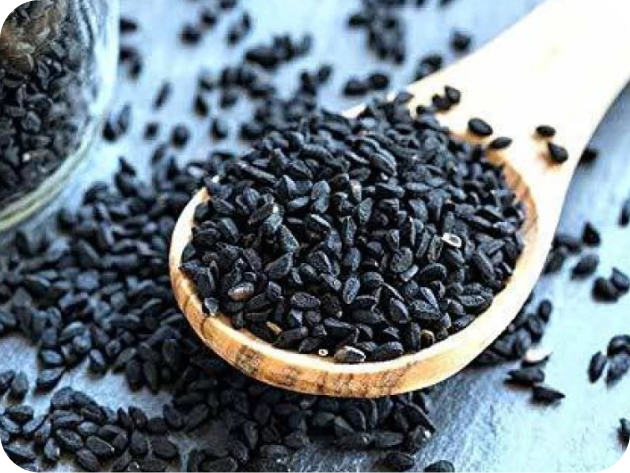
Nigella sativa, commonly known as black cumin or nigella seeds, is an annual flowering plant native to southwest Asia. The seeds of this plant, often referred to as black seeds, are used both as a spice and for their potential health benefits. The technical details of nigella seeds encompass various aspects:
Nigella seeds, with their distinct appearance and multifaceted applications, represent a valuable spice with both culinary and potential health benefits. As with many spices, the richness of nigella seeds lies not only in their flavor but also in the intricate details of their botanical and culinary characteristics.
| Scientific Name: | Nigella sativa |
| Family: | Ranunculaceae |
| Origins: | Gujarat and Madhya Pradesh (India) |
| Size and Shape: | Nigella seeds are small and angular, roughly triangular, and measure approximately 2-3 mm in length. |
| Color: | The seeds are black and possess a matte finish. |
| Flavor Profile: | Nigella seeds have a pungent, slightly bitter taste with an aroma reminiscent of oregano or thyme. |
| Thymohydroquinone: | Another important component, thymohydroquinone, contributes to the antioxidant and anti-inflammatory effects of nigella seeds. |
| Dithymoquinone: | This compound is formed from the oxidation of thymoquinone and has been studied for its potential anti-cancer properties. |
| Thymol: | Present in smaller amounts, thymol is a monoterpene phenol that adds to the aromatic profile of nigella seeds and is known for its antimicrobial properties. |
| Spice: | Nigella seeds are used as a spice in various cuisines, adding a unique flavor to dishes. |
| Condiment: | Commonly sprinkled on breads, salads, and other culinary creations, nigella seeds contribute both flavor and visual appeal. |
| Conventional Grade: | – |
| IPM and Organic: | – |
| Purity: | – |
| Allergens: | – |
| Packing: | – |
| Shelf Life: | – |